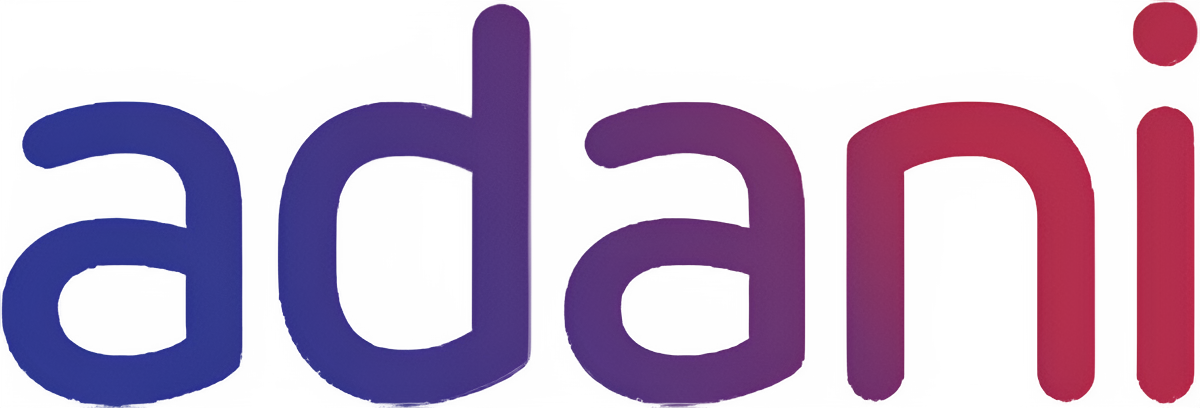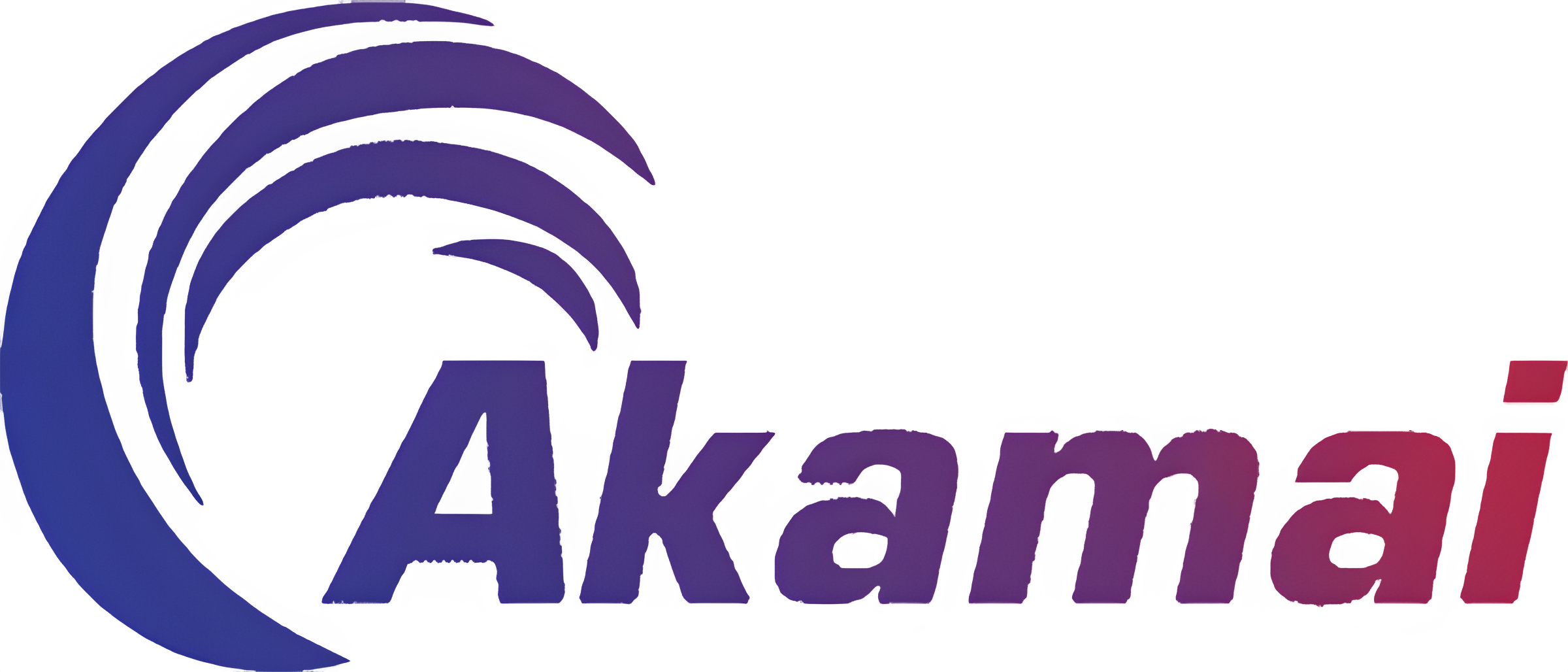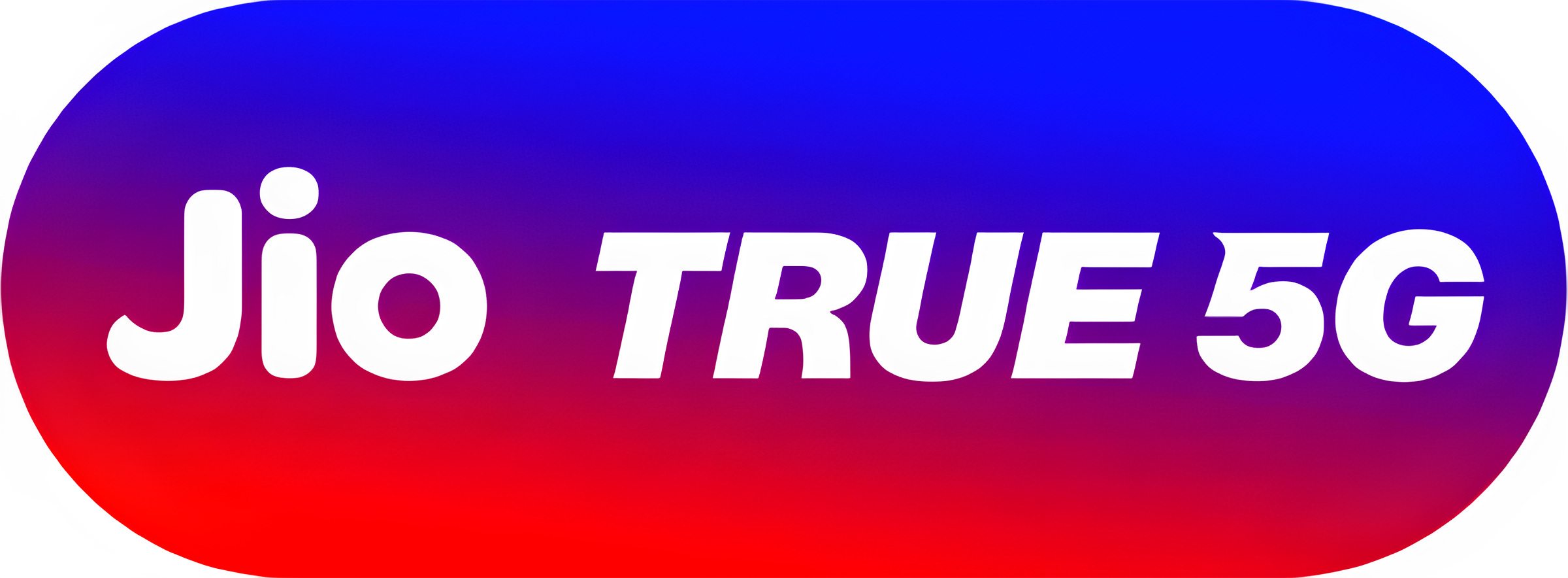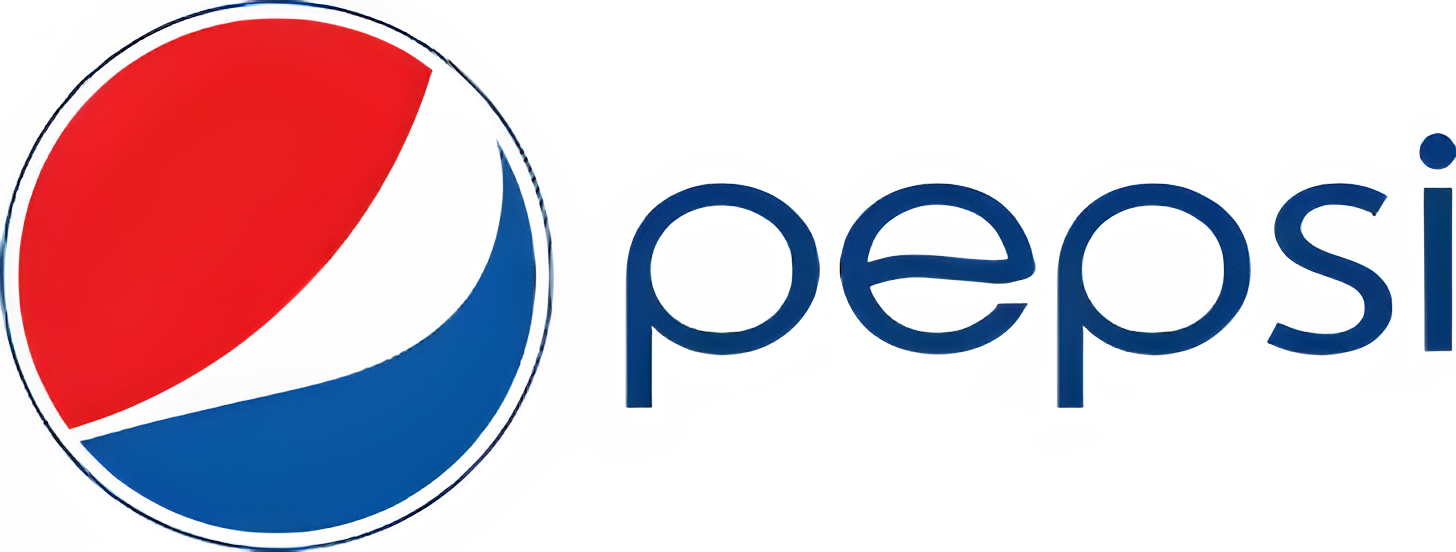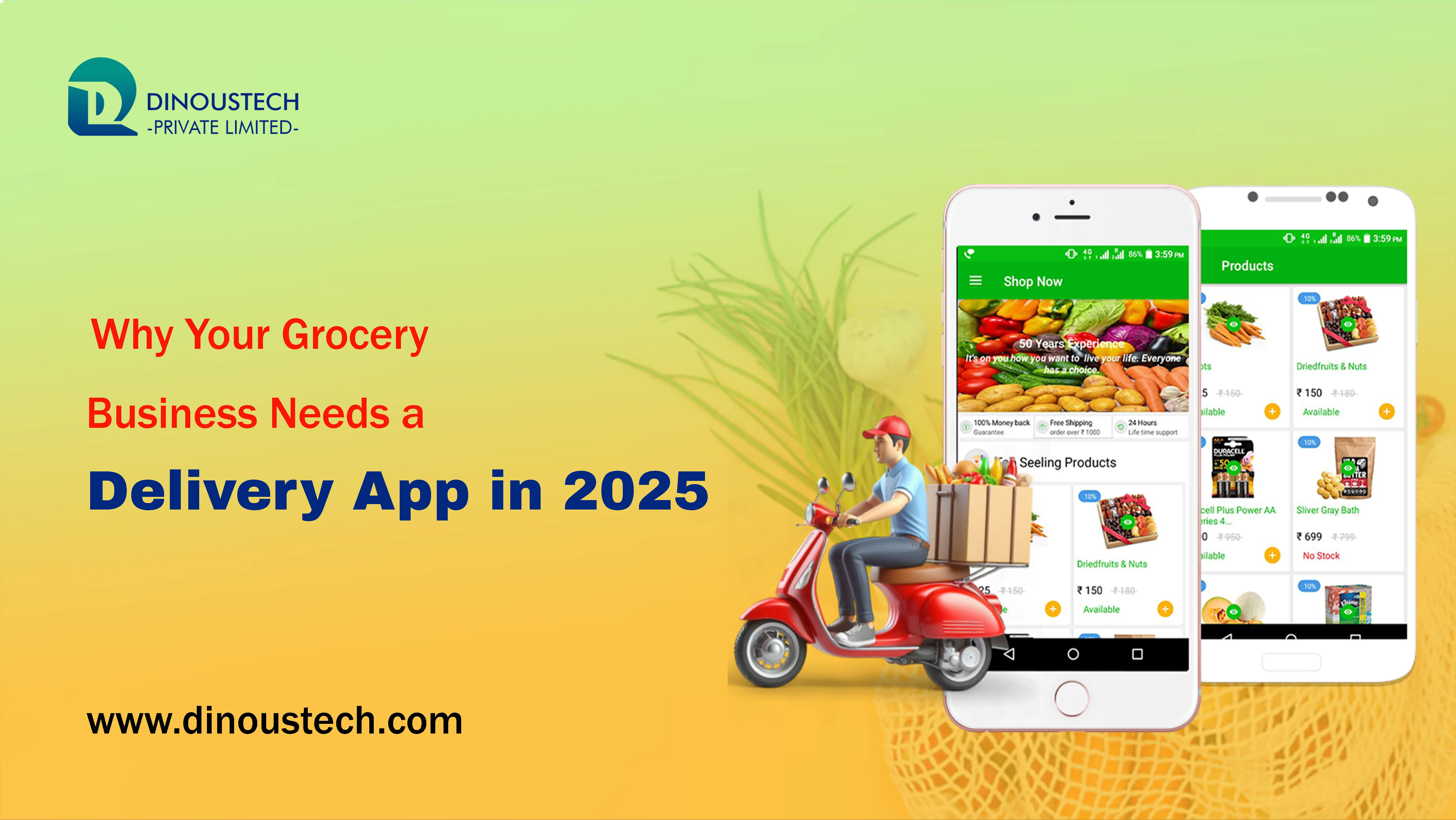Why Your Grocery Business Needs a Delivery App in 2025
As consumer expectations evolve, grocery businesses can no longer rely solely on traditional storefronts. In 2025, mobile commerce is projected to account for nearly 59% of total retail e-commerce sales, representing a $4.01 trillion market opportunity. A dedicated delivery app not only satisfies this mobile-first demand but also unlocks operational efficiencies, deeper customer engagement, and new revenue streams. Partnering with a specialized Grocery Delivery app development company like Dinoustech Private Limited ensures you harness domain expertise, transparent pricing, and seamless integration—transforming grocery retail into a future-proof, tech-driven enterprise.
The Changing Grocery Landscape
The grocery industry has undergone seismic shifts in recent years. What began as an occasional convenience has become a consumer expectation: 30.6% of global users are projected to rely on food delivery services in 2025, reflecting growing dependence on digital ordering platforms. This trend extends beyond urban centers—27% of seniors now use services like Instacart and Shipt, with another 24% expressing interest in joining soon. Such widespread adoption underscores the imperative for grocers to own their customer experience rather than cede control to third-party marketplaces.
Owning an app provides distinct advantages over relying on aggregators. First, it secures first-party data—insights into individual preferences, purchase frequency, and lifetime value—that drives personalization and loyalty programs. According to Forbes, first-party data empowers brands to craft targeted campaigns, bolster customer trust, and navigate tightening privacy regulations. Second, an in-house app preserves margins by sidestepping high commission fees, and third, it strengthens brand identity through bespoke design and messaging.
Strategic Benefits of a Delivery App
Investing in a custom delivery solution in 2025 delivers multifaceted returns. By extending service beyond your physical catchment area, you tap into busy professionals, families, and seniors who value home delivery. The result is expanded market reach and higher average order values, as users gravitate toward convenience-driven premium offerings. Moreover, real-time order tracking and route optimization reduce delivery times, enhancing customer satisfaction and repeat purchase rates.
Operationally, a purpose-built app automates inventory synchronization between your point-of-sale system and the digital storefront, minimizing stockouts and waste. Manual errors decline as orders flow directly into your order management system, eliminating the need for manual entry or error-prone phone orders. With up-to-the-minute data on best-selling items, you can fine-tune procurement and merchandising strategies, ultimately lowering your mobile app development cost per order through efficient resource allocation and waste reduction.
Aligning with the Right Development Partner
Selecting between in-house teams and external experts is pivotal. While in-house development may promise control, the overhead of hiring, training, and infrastructure can inflate costs and delay time-to-market. For most grocery retailers, partnering with a mobile app development company that specializes in the food and delivery sector is the optimal path. Dinoustech Private Limited, as a leading Grocery Delivery app development company, combines deep domain knowledge with agile processes to deliver scalable solutions in under 16 weeks.
Transparency in pricing is equally critical. An affordable software development company will provide clear, milestone-based proposals that align with your budgetary constraints. Beware of quotes that seem unusually low—they often mask hidden fees or compromises in quality. Dinoustech’s approach ensures you understand every line item, from discovery workshops to user acceptance testing, so there are no unwelcome surprises.
Navigating iOS Vs Android App Development
In 2025’s bifurcated mobile ecosystem, the choice between iOS Vs Android app development is more nuanced than ever. Android continues to dominate global market share at 72.23%, while iOS holds a robust 27.39%. Android’s broad reach makes it indispensable for emerging markets and cost-sensitive segments, whereas iOS users typically exhibit higher spend and faster adoption of app updates. A dual-platform release maximizes coverage but also increases development and maintenance complexity.
For grocers mindful of mobile app development cost, cross-platform frameworks like React Native or Flutter present a compelling alternative. By sharing up to 90% of code across platforms, you reduce time and budget overhead while still delivering near-native performance. Dinoustech Private Limited advises most clients to validate their concept with a cross-platform MVP before investing in fully native experiences based on user adoption metrics.
Budgeting for Mobile App Development
Understanding the breakdown of mobile app development cost is essential for informed decision-making. On average, developing a mid-complexity grocery delivery app range from $60,000 to $150,000, with basic solutions starting around $30,000 and enterprise-grade platforms exceeding $350,000, depending on feature scope. Key cost drivers include UI/UX design complexity, integration with legacy systems, real-time tracking capabilities, and payment gateway certifications.
Beyond initial build, you must factor in ongoing expenses. An affordable software maintenance company ensures your app remains secure, compliant, and feature-rich. Typically, annual maintenance budgets add 15–20% of the initial development cost, covering bug fixes, platform upgrades, monitoring, and minor enhancements. Partnering with Dinoustech’s maintenance arm provides SLA-backed support at competitive rates, guarding against unplanned downtimes and protecting ROI.
Ensuring a Seamless User Experience
An app’s success rests on intuitive design and frictionless interactions. Effective onboarding with social or biometric login options reduces drop-off, while AI-powered search and dynamic filters help users find fresh produce or pantry staples in seconds. Streamlined checkout, offering digital wallets, UPI, and saved preferences, aims for under-30-second transaction times, boosting conversion rates. Real-time order tracking with live driver ETAs and in-app chat builds transparency and trust, critical for first-time users.
Moreover, embedding personalized offers—powered by your first-party data—drives engagement. Loyalty programs that reward frequent purchases or referrals nurture advocacy and generate word-of-mouth growth. Dinoustech Private Limited’s UX team conducts iterative user testing to refine these flows, ensuring your app delights customers and fosters long-term loyalty.
Leveraging Advanced Technologies
Staying competitive in 2025 requires embracing emerging capabilities. AI and machine learning underpin personalized recommendations, demand forecasting, and dynamic pricing. Integrations with IoT-enabled smart shelves enable real-time inventory tracking, alerting you when stock levels dip below thresholds. Voice commerce integration allows hands-free ordering via smart assistants, and augmented reality lets shoppers visualize items before adding them to their cart.
By collaborating with Dinoustech’s R&D division—part of our affordable web development services suite—you can roll out these innovations in phases. This modular approach minimizes risk, controls costs, and ensures each feature aligns with evolving customer needs and market conditions.
Compliance, Security, and Trust
Handling grocery orders involves sensitive customer data and payment information. Compliance with data protection laws such as GDPR and CCPA is non-negotiable, as is adherence to PCI DSS for secure transactions. Dinoustech’s security-first development methodology embeds encryption, secure key management, and regular penetration testing into every release cycle. These measures safeguard customer privacy, fortify your brand reputation, and protect against costly breaches or regulatory fines.
In addition, maintaining local food safety standards—by capturing dietary preferences or allergen data within the app—demonstrates commitment to consumer well-being. Such features not only differentiate your service but also build trust in an increasingly conscientious marketplace.
Measuring Success Through Data
With your app live, the focus shifts to performance measurement. Dinoustech’s comprehensive analytics dashboard—part of our affordable web development services—surfaces key performance indicators such as monthly active users, order frequency, average order value, and customer lifetime value. Monitoring churn rates, delivery accuracy, and fulfillment times informs iterative improvements. These data-driven insights ensure your app continually adapts to customer behavior patterns and market trends, driving sustainable growth.
Conclusion
In 2025’s mobile-centric world, launching a grocery delivery app is imperative for growth and resilience. From capturing the booming 59% mobile commerce share to harnessing first-party data for personalized engagement, the benefits are extensive and measurable. By partnering with Dinoustech Private Limited an expert grocery delivery app development company, mobile app development company, and affordable software development company—you gain a full-stack solution that balances cost, quality, and innovation. Coupled with our affordable software maintenance company support and affordable web development services, your investment remains future-proof and agile. Embrace the digital transformation today and ensure your grocery business thrives in the competitive landscape of tomorrow.

